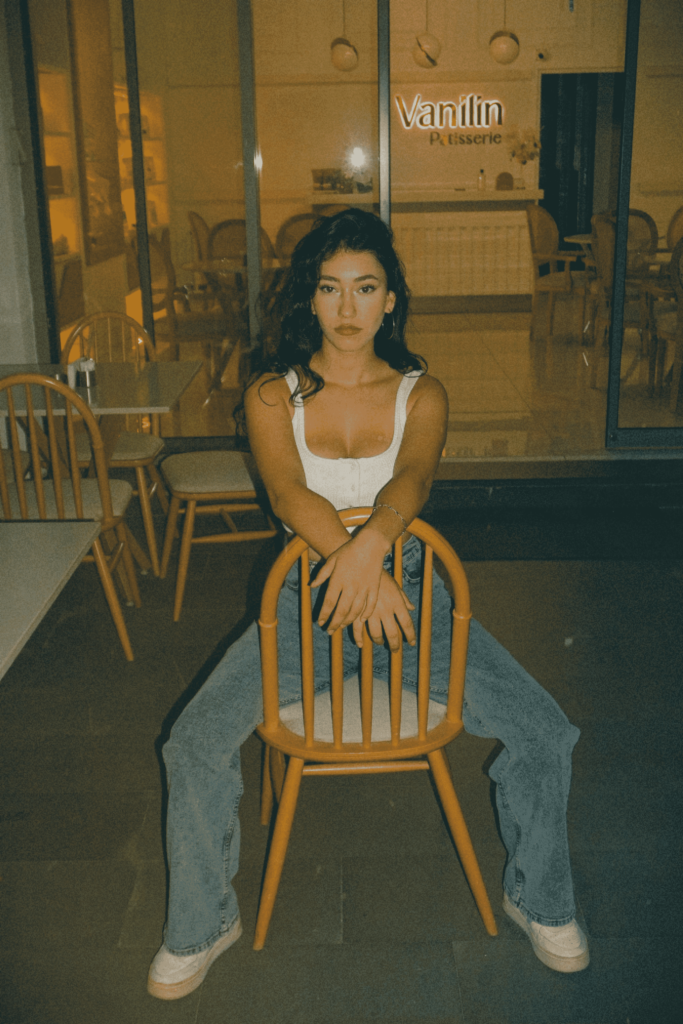Last updated on August 26th, 2024 at 04:18 pm
- Visual Arts and the Cult of the Artist
- Historical Context
- The Artist as Brand
- Social Media and Self-Promotion
- Impact on Artistic Process
- The Double-Edged Sword of Artistic Narcissism
- Case Study: Salvador Dalí
- The Role of Art Education
- Gender Dynamics in Artistic Narcissism
- The Influence of the Art Market
- Narcissism and Artistic Innovation
- Music Industry and Performer Narcissism
- The Cult of the Rock Star
- The Impact of Fame
- Social Media and Self-Promotion
- The Diva Phenomenon
- Narcissism and Creativity in Music
- The Dark Side of Musical Narcissism
- Narcissism and Genre
- The Role of the Music Industry
- Narcissism and Audience Perception
- The Evolving Landscape of Musical Narcissism
- Literary World and Authorial Self-Importance
- The Myth of the Genius Author
- Literary Feuds and Ego Clashes
- Self-Promotion in the Literary World
- The Impact of Literary Awards
- Narcissism and Literary Style
- The Double-Edged Sword of Authorial Confidence
- Narcissism and Literary Genres
- The Role of Literary Critics
- Gender Dynamics in Literary Narcissism
- The Changing Landscape of Publishing
- Narcissism and Literary Legacy
- Thank You For Reading. Did this first part pique your interest? There’s so much more to explore! We’ve only scratched the surface of how narcissism is impacting our world.
- Ready For More? Click Here To Read Other Parts!
Imagine a world where every brushstroke, every musical note, every poetic verse is tainted by an insidious force – the artist’s own ego. Welcome to the narcissism epidemic in the creative world, where self-obsession threatens to eclipse genuine artistry. Are you ready to delve into the dark underbelly of creativity?
Picture this: a talented painter, brush in hand, creating breathtaking masterpieces. But wait – is that art on the canvas, or just a grandiose reflection of the artist’s inflated self-image? It’s a tightrope walk between self-expression and self-absorption, and many are losing their balance.
You’ve seen it before – the temperamental diva, the eccentric sculptor, the brooding writer. We’ve romanticized these archetypes, but at what cost? Is narcissism the secret ingredient to groundbreaking art, or is it slowly poisoning the well of creativity?
In this exposé, we’ll unmask the narcissist artist, peeling back layers of bravado to reveal the insecurities beneath. We’ll explore the thin line where artistic confidence morphs into unbridled egotism, and ask the uncomfortable question: Are great artists born narcissists, or does the art world breed them?
Brace yourself for a journey through creativity’s dark side. We’ll navigate the treacherous waters of ego, talent, and art, uncovering the truth behind the narcissism epidemic that’s swept through studios, galleries, and concert halls. Is it a blessing that fuels artistic genius, or a curse that stifles true expression?
Prepare to have your perceptions challenged and your assumptions shattered. This isn’t just another article – it’s a wake-up call to the art world. Are you ready to confront the narcissism dilemma head-on?
Narcissism in Different Creative Fields
The relationship between narcissism and creativity is complex and multifaceted. While a certain level of self-confidence and belief in one’s abilities can be beneficial for creative pursuits, excessive narcissism can lead to negative outcomes. Let’s explore how narcissism manifests in various creative fields:
Visual Arts and the Cult of the Artist
Historical Context
The cult of the artist began to take shape during the Renaissance, with figures like Leonardo da Vinci and Michelangelo achieving celebrity status. This trend continued through the centuries, reaching new heights with the advent of modern art movements.
For example, Pablo Picasso, one of the most influential artists of the 20th century, was known for his larger-than-life personality and narcissistic traits. He once famously said, “God is really only another artist. He invented the giraffe, the elephant, and the cat. He has no real style. He just goes on trying other things.”

-By Som Dutt from https://embraceinnerchaos.com
The Artist as Brand
In contemporary art, many artists have become brands unto themselves. This phenomenon can be seen in the works of artists like Jeff Koons, Damien Hirst, and Takashi Murakami. Jeff Koons, for instance, has built an empire around his persona.
His works often sell for millions of dollars, with his “Rabbit” sculpture fetching $91.1 million in 2019, setting a record for a living artist. Koons’ art often features banal objects inflated to monumental proportions, which some critics see as a reflection of his outsized ego.
Social Media and Self-Promotion
The rise of social media has provided new platforms for artists to promote themselves and their work. While this can be beneficial, it can also feed into narcissistic tendencies.
A study published in the journal “Computers in Human Behavior” in 2020 found that visual artists who scored higher on measures of narcissism tended to post more selfies and self-promotional content on Instagram. These artists also received more likes and followers, suggesting that narcissistic behaviors may be rewarded in the digital art world.
Impact on Artistic Process
While some level of self-belief can fuel creativity, extreme narcissism can be detrimental to artistic growth. Artists who are overly focused on their own genius may be less open to criticism or new ideas.
Research published in the “European Journal of Social Psychology” in 2018 found that narcissistic individuals were less likely to seek or accept feedback on their creative work, potentially limiting their artistic development.
The Double-Edged Sword of Artistic Narcissism
It’s important to note that not all self-focused behavior in artists is necessarily pathological narcissism. Some degree of self-promotion and confidence is often necessary for success in the competitive art world.
However, when this crosses into grandiosity and an inability to accept criticism, it can become problematic. The psychological impact of narcissistic traits in artists can extend to their relationships with galleries, critics, and other artists, potentially leading to conflicts and isolation.
Case Study: Salvador Dalí
Salvador Dalí is often cited as an example of narcissism in visual art. Known for his surrealist paintings and flamboyant personality, Dalí once declared, “Every morning upon awakening, I experience a supreme pleasure: that of being Salvador Dalí.”
While Dalí’s narcissism may have contributed to his unique artistic vision and self-promotion skills, it also led to conflicts with other artists and critics. He was expelled from the Surrealist movement due to his political views and self-aggrandizing behavior.
The Role of Art Education
Art schools and institutions play a crucial role in shaping artists’ attitudes. Some critics argue that certain approaches to art education may inadvertently encourage narcissistic tendencies by emphasizing individual expression over technical skill or collaborative work.
A study published in the “International Journal of Art & Design Education” in 2019 suggested that art education programs that balance individual creativity with critical thinking and peer feedback may help mitigate narcissistic tendencies in emerging artists.
Gender Dynamics in Artistic Narcissism
It’s worth noting that the “cult of the artist” has historically been predominantly male-centric. Female artists have often faced greater challenges in achieving recognition and have been less likely to be labeled as “geniuses.”
However, this doesn’t mean that female artists are immune to narcissistic tendencies. Artists like Yayoi Kusama and Marina Abramović have achieved significant fame and have been known for their strong personalities and self-promotion skills.
The Influence of the Art Market
The commercial art world, with its focus on high-value sales and celebrity artists, can exacerbate narcissistic tendencies. The pressure to maintain a public image and command high prices for one’s work can lead some artists to develop an inflated sense of self-importance.
For example, Damien Hirst, one of the wealthiest artists in the world, has been criticized for his business-like approach to art production. His 2008 auction “Beautiful Inside My Head Forever” bypassed galleries to sell directly to collectors, netting over £111 million in sales.

-By Som Dutt from https://embraceinnerchaos.com
Narcissism and Artistic Innovation
While excessive narcissism can be detrimental, some researchers argue that a certain level of self-belief may be necessary for artistic innovation. Artists who challenge established norms or create entirely new styles often need to have strong confidence in their vision.
For instance, Vincent van Gogh, despite his struggles with mental health, believed strongly in the value of his work even when it was largely unrecognized during his lifetime. Today, he is considered one of the most influential figures in Western art.
The visual arts have long been associated with the concept of the “artistic genius” – a notion that often feeds into narcissistic tendencies. This idea dates back to the Renaissance, when artists began to be seen as individual creators rather than anonymous craftsmen.
Music Industry and Performer Narcissism
The music industry, with its focus on performance and public image, provides fertile ground for narcissistic tendencies to flourish. From rock stars to pop divas, the world of music has seen its fair share of outsized egos.
The Cult of the Rock Star
The image of the narcissistic rock star has been a staple of popular culture since the 1960s. Artists like Mick Jagger, Jim Morrison, and Freddie Mercury cultivated larger-than-life personas that often bordered on (or crossed into) narcissism.
For example, Kanye West, now known as Ye, has become infamous for his narcissistic behavior. He once compared himself to Jesus and Steve Jobs, saying, “I am Warhol. I am the number one most impactful artist of our generation. I am Shakespeare in the flesh. Walt Disney. Nike. Google.”
The Impact of Fame
The intense fame that often accompanies musical success can exacerbate narcissistic tendencies. Constant adulation from fans and the media can lead to an inflated sense of self-importance.
A study published in the “Journal of Research in Personality” in 2016 found that fame was positively correlated with narcissistic traits among musicians. The researchers suggested that the experience of fame may reinforce and amplify pre-existing narcissistic tendencies.
Social Media and Self-Promotion
Social media platforms have given musicians unprecedented opportunities for self-promotion and direct interaction with fans. While this can be positive, it can also feed into narcissistic behaviors. Research published in “Psychology of Popular Media Culture” in 2019 found that musicians who scored higher on measures of narcissism tended to post more selfies and self-promotional content on social media. These musicians also had more followers on average, suggesting that narcissistic behaviors may be rewarded in the digital music landscape.
The Diva Phenomenon
The concept of the “diva” in music often intersects with narcissistic traits. Female performers like Madonna, Mariah Carey, and Beyoncé have been labeled as divas, a term that can carry both positive (talented, powerful) and negative (demanding, self-centered) connotations.
For instance, Mariah Carey has been known for her extravagant demands, including a reported request for 20 white kittens and 100 white doves at a Christmas lights switch-on event in London.
Narcissism and Creativity in Music
While narcissism can have negative impacts, some researchers argue that a certain level of self-belief may contribute to musical creativity and success. A study published in the “Journal of Research in Personality” in 2017 found that narcissism was positively associated with creative achievement in musicians.
The researchers suggested that narcissistic traits like confidence and self-promotion may help musicians succeed in a competitive industry.
The Dark Side of Musical Narcissism
However, extreme narcissism can lead to negative outcomes in the music industry. Narcissistic abuse in the workplace can manifest in the form of difficult collaborations, conflicts with band members, and mistreatment of staff.
For example, the breakup of The Beatles was partly attributed to conflicts between band members, with John Lennon and Paul McCartney both displaying narcissistic traits in their struggle for control of the band’s direction.
Narcissism and Genre
Some research suggests that levels of narcissism may vary across musical genres. A study published in “Psychology of Music” in 2018 found that narcissism scores were highest among rap and hip-hop artists, followed by pop musicians, with classical and jazz musicians scoring lowest.
However, it’s important to note that this doesn’t mean all rap artists are narcissists or that classical musicians can’t display narcissistic traits. Individual differences always play a significant role.
The Role of the Music Industry
The structure of the music industry itself may contribute to narcissistic behaviors in performers. The focus on chart positions, awards, and record sales can create an environment where self-promotion and competitiveness are rewarded.
For instance, the Grammy Awards have been criticized for fostering a culture of self-importance. Kanye West’s interruption of Taylor Swift’s acceptance speech at the 2009 VMAs is often cited as an extreme example of narcissistic behavior in the music industry.
Narcissism and Audience Perception
Interestingly, some level of perceived narcissism may actually enhance an artist’s appeal to certain audiences. A study published in “Psychology of Aesthetics, Creativity, and the Arts” in 2020 found that moderate levels of narcissistic behaviors in musicians were associated with higher ratings of charisma and stage presence from audiences.
However, the same study found that extreme narcissism led to negative perceptions, suggesting there’s a “sweet spot” where a certain level of self-confidence enhances performance without alienating the audience.
The Evolving Landscape of Musical Narcissism
As the music industry continues to change, so too does the expression of narcissism within it. The rise of streaming platforms and social media has democratized music distribution, potentially reducing the gatekeeping role of record labels.
While this has opened up opportunities for more artists, it has also intensified competition and the need for self-promotion. Some argue that this new landscape may be fostering a new kind of digital narcissism among musicians.
Literary World and Authorial Self-Importance
The literary world, while perhaps less associated with overt displays of ego than the visual arts or music industry, is not immune to narcissistic tendencies.
The solitary nature of writing and the tradition of the “great author” can sometimes foster an inflated sense of self-importance.
The Myth of the Genius Author
The concept of the author as a solitary genius has deep roots in literary culture. This idea, which gained prominence during the Romantic period, can feed into narcissistic tendencies by emphasizing the unique vision and importance of the individual writer.
For example, Ernest Hemingway once said, “There is nothing to writing. All you do is sit down at a typewriter and bleed.” This quote, while dramatic, reinforces the idea of the author as a special, suffering individual.
Literary Feuds and Ego Clashes
The literary world has seen its fair share of feuds and conflicts, often fueled by ego and narcissistic traits. These conflicts can sometimes overshadow the work itself. One famous example is the feud between Norman Mailer and Gore Vidal.
Their rivalry culminated in a physical altercation at a party, with Mailer headbutting Vidal. Both authors were known for their outsized egos and confrontational personalities.
Self-Promotion in the Literary World
While traditionally, authors were expected to let their work speak for itself, the modern literary landscape often requires authors to engage in self-promotion. This shift can exacerbate narcissistic tendencies. Social media has amplified this trend.
A study published in the “Journal of Research in Personality” in 2019 found that authors who scored higher on measures of narcissism were more likely to engage in self-promotional behaviors on social media platforms like Twitter.
The Impact of Literary Awards
Literary awards, while important for recognizing excellence, can also feed into narcissistic tendencies. The prestige associated with major awards like the Pulitzer Prize or the Man Booker Prize can inflate authors’ sense of self-importance.
For instance, when Philip Roth was repeatedly passed over for the Nobel Prize in Literature, he reportedly became bitter and resentful. This reaction could be seen as a manifestation of narcissistic traits.

-By Som Dutt from https://embraceinnerchaos.com
Narcissism and Literary Style
Some researchers have suggested that narcissistic traits may influence an author’s writing style. A study published in the “Journal of Research in Personality” in 2018 found that authors who scored higher on measures of narcissism tended to use more self-referential language in their work.
For example, the works of Charles Bukowski, known for their autobiographical nature and self-aggrandizing protagonist, could be seen as reflecting narcissistic traits.
The Double-Edged Sword of Authorial Confidence
While excessive narcissism can be detrimental, some level of self-belief is often necessary for authors to persevere in a challenging and often solitary profession.
Stephen King, in his memoir “On Writing,” emphasizes the importance of self-confidence: “Writing fiction, especially a long work of fiction, can be a difficult, lonely job; it’s like crossing the Atlantic Ocean in a bathtub. There’s plenty of opportunity for self-doubt.”
Narcissism and Literary Genres
Some literary genres may be more prone to authorial narcissism than others. For instance, memoirs and autofiction, by their very nature, place the author’s experiences and perspective at the center of the work.
Karl Ove Knausgård’s six-volume autobiographical novel “My Struggle” could be seen as an extreme example of this tendency. The work’s exhaustive self-examination and its very title suggest a certain level of authorial self-importance.
The Role of Literary Critics
Literary critics play a crucial role in shaping perceptions of authors and their work. However, the relationship between critics and authors can sometimes become contentious, particularly when narcissistic traits are involved.
For example, author Richard Ford reportedly spat on critic Colson Whitehead at a party in response to a negative review, an action that could be interpreted as a narcissistic inability to accept criticism.
Gender Dynamics in Literary Narcissism
Historically, the literary canon has been dominated by male authors, and the “great author” myth has often been associated with masculine traits. However, this doesn’t mean that female authors are immune to narcissistic tendencies.
Virginia Woolf, while a pioneering feminist writer, was known for her strong sense of her own importance as an author. In her diary, she wrote, “I am the only woman in England free to write what I like.”

-By Som Dutt from https://embraceinnerchaos.com
The Changing Landscape of Publishing
The rise of self-publishing and online platforms has democratized the publishing process, potentially allowing for greater expression of narcissistic tendencies. Without the traditional gatekeepers of the publishing industry, authors may have more freedom to indulge in self-importance.
However, this new landscape also means increased competition and the need for self-promotion, which could exacerbate narcissistic behaviors among authors.
Narcissism and Literary Legacy
The desire to leave a lasting legacy is common among authors and can sometimes verge on narcissism. This can manifest in various ways, from carefully curating one’s public image to obsessing over posthumous publication.
Vladimir Nabokov, for instance, left detailed instructions for the publication of his unfinished novel “The Original of Laura” after his death, insisting that it be published as a set of index cards that readers could rearrange.
Thank You For Reading. Did this first part pique your interest? There’s so much more to explore! We’ve only scratched the surface of how narcissism is impacting our world.
Continue your journey through all 26 parts of this series to gain a comprehensive understanding on the bigger picture.
Each part builds on the last, providing you with a nuanced and thorough exploration of this complex issue. Don’t miss out on the full picture.
Ready For More? Click Here To Read Other Parts!
The Narcissism Epidemic: How Self-Obsession Is Reshaping Society Part 1
The Narcissism Epidemic: Why Younger Generations More Narcissistic? Part 2
The Narcissism Epidemic: How Technology Is Fueling the Flames of Narcissism Part 3
The Narcissism Epidemic: Navigating Narcissism at Workplace Part 4
The Narcissism Epidemic: The Impact of Narcissistic Leadership on Company Culture Part 5
The Narcissism Epidemic: Fame, Fandom, and Celebrity Culture Part 6
The Narcissism Epidemic: How Media Cultivates Celebrity Worship Part 7
The Narcissism Epidemic: The Impact of Celebrity Narcissism on Society Part 8
The Narcissism Epidemic: How Social Media Feeds Your Inner Narcissist Part 9
The Narcissism Epidemic: Social Media and Self-Obsession Part 10
The Narcissism Epidemic: The Dark Side of Social Media Validation Part 11
The Narcissism Epidemic: When Parents’ Self-Absorption Affects Their Children Part 12
The Narcissism Epidemic: The Effects of Narcissistic Parenting on Children Part 13
The Narcissism Epidemic in Leadership: Brilliance or Tyranny? Uncover the Paradox Part 14
The Narcissism Epidemic: The Dark Side of Narcissistic Leadership Part 15
The Narcissism Epidemic: The Dark Side of Internet Fame: From Influence to Ego Part 16
The Narcissism Epidemic: The Role of Social Media Influencers in Promoting Narcissism Part 17
The Narcissism Epidemic: The Influencer-Narcissism Connection Exposed Part 18
The Narcissism Epidemic: How Does Narcissism Fuel (or Hinder) Artistic Genius? Part 19
The Narcissism Epidemic: The Impact of Narcissism on Artistic Process Part 20
The Narcissism Epidemic: When Artist Egos Overshadow Their Work Part 21
The Narcissism Epidemic: The Dark Side of Charismatic Politicians Part 22
The Narcissism Epidemic in Politics: When Ego Drives Policy Part 23
The Narcissism Epidemic: The Impact of Narcissistic Leadership on Governance Part 24
The Narcissism Epidemic of Economics: Consumerism and Self-Image Part 25
The Narcissism Epidemic: The Impact of Narcissism on Individuals and Society Part 26



